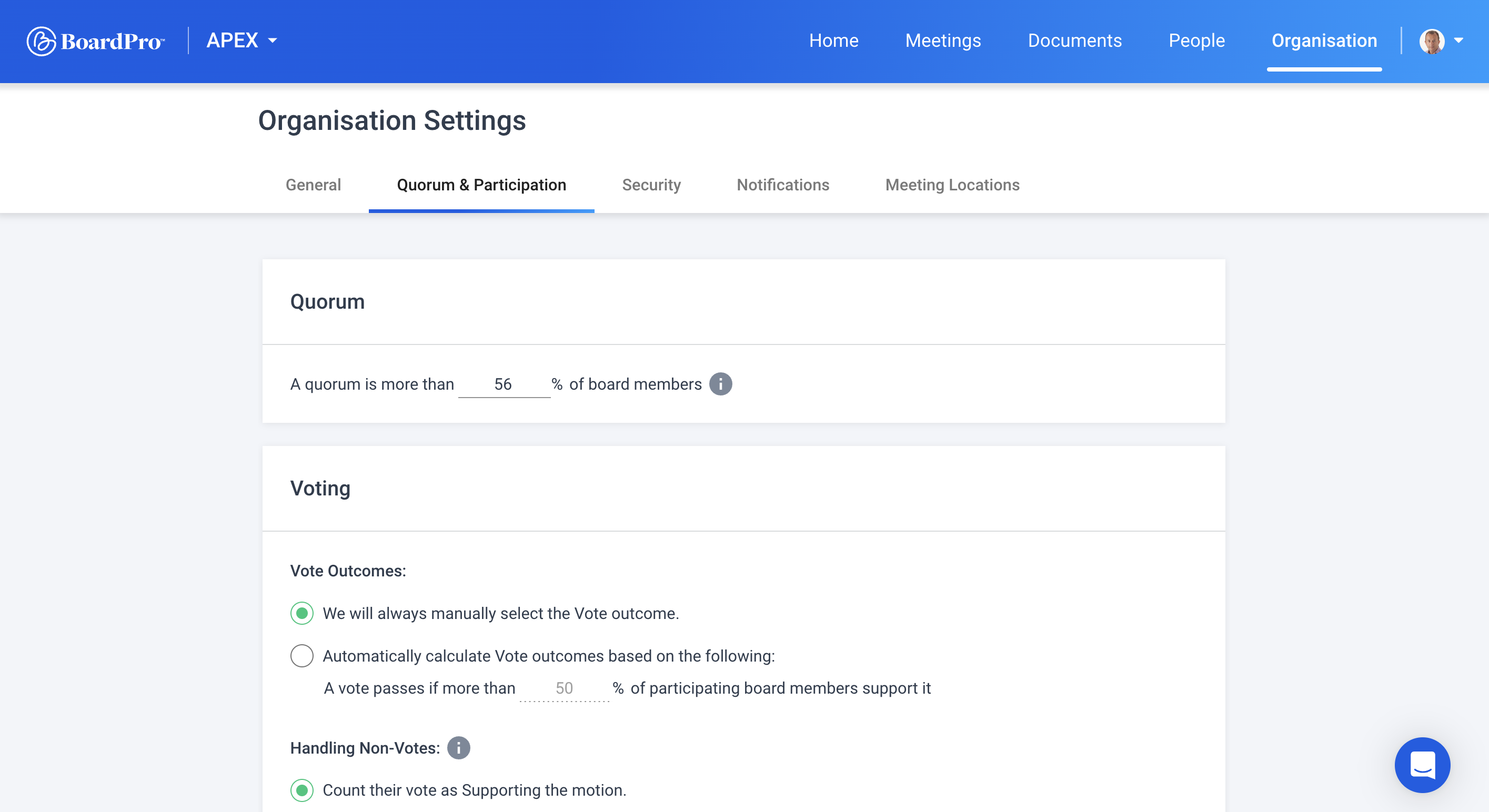How a quorum applies to your board meeting
The concept of a quorum plays a pivotal role in ensuring that decisions made during board meetings are both legitimate and representative of the collective interests of stakeholders.
What is a quorum?
At its core, a quorum is the minimum number of members that must be present at a meeting to make the proceedings of that meeting valid. This seemingly straightforward concept has significant implications for how boards of directors operate, how they make decisions that impact the direction and success of an organisation, and how they practise good governance.
The size of a quorum is generally specified in the organisation’s constitution. If no quorum is prescribed, the quorum under common law is a majority (i.e., just over half) of the membership of the board.
For companies in New Zealand a quorum is a simple majority of directors. It is common in other organisational settings to find the quorum described as half the number of board members plus one. This takes care of the problem of boards that have an even number of members although a quorum of just half the number of members may also be acceptable in some situations.

In New Zealand, a board member who has declared a conflict of interest can still be counted towards a quorum unless the organisation's constitution or governing documents state otherwise.
However, it's important to note that while the board member can be counted towards the quorum, they may not be able to participate in discussions or vote on matters related to the conflict of interest. In such cases, the board member should recuse themselves from the discussion and the decision-making process.
The specific rules and procedures related to conflicts of interest and quorums may vary depending on the organisation's governing documents and any applicable laws or regulations. Therefore, it's important to refer to those documents for guidance in specific situations.
Business conducted at a meeting held without a quorum present is invalid. However, if the constitution (or the board’s ‘standing orders’ or similar) allow, the ‘decisions’ of such a meeting may be validated at a subsequent meeting. Otherwise, the business must be dealt with again.
Interestingly, anyone who deliberately withdraws from a meeting to remove the quorum is not entitled to challenge the resulting lack of a quorum!
For board committees, the quorum is set by the board as the body establishing and appointing the committee. If no quorum is fixed all committee members must be present. The issue of a quorum is less important for board committees because they are seldom delegated decision-making authority. Generally, the function of board committees is to carry out ‘pre-board’ work that informs and helps shape eventual decisions by the board.

Why is having a quorum important?
A quorum is prescribed to protect the integrity of the decision-making process. The use of a quorum requirement ensures that decisions cannot be taken without a majority of board members being present.
A quorum requirement is also important because governing boards make decisions collectively with group accountability. Even when members are not present, they may be held accountable for the board decisions made in their absence.
Setting a minimum number of members who must be directly involved manages the risk that a board decision may be made by too few members and, thus, may not reflect what would be acceptable to the board as a whole. It also protects to some extent, particularly in larger boards, against swings in attendance that may result in a different board turning up at each meeting.
It makes sense for the board (and the entity it governs!) to be protected from the risk of board decisions that are not balanced and well-rounded and that are also vulnerable to being overturned by a subsequent meeting when more members are present. It is rare for any board that there is perfect attendance at every meeting throughout the year. The quorum is about ensuring there are enough members present to secure a reasonable vote of the majority.
Of course, there are some decisions a board that lacks a quorum can and must make. For example:
- on the steps needed to secure a quorum
- on fixing the time to adjourn
Given the importance of a quorum for a board’s decisions it will be clear that the meeting minutes must carefully record the loss of a quorum and its subsequent recovery if that occurs.
Learn how to make your board more productive with board management software
Should the specified quorum be changed when it is constantly in danger of being breached?
A board is constituted to govern, and the assumption is that its members will be diligent in attending its meetings. However, that is not always the case. When it becomes a regular problem that a quorum is difficult to secure, talk often turns to the idea of reducing the quorum requirement. However, even where a reduction may be legally possible, is it a good idea? A lower quorum requirement may provide some immediate relief, but it is an open admission that attendance does not matter.
Board meetings are not convened so that management reports and proposals can receive some sort of reactive blessing from the board. Good governance requires the board to undertake a proactive, deliberative process to think through and make choices between alternatives when, often, none of those is particularly attractive. It is not enough, therefore, to allow a situation to persist with the board being barely able to make a quorum. So, what to do?
- Get serious about attendance. For example, adopt a constitutional amendment to the unequivocal effect that any board member who is absent from, say, three consecutive meetings (and/or a specified number or proportion of total meetings in a given year), is considered to have resigned.
- Set a higher quorum number. This increases the moral pressure on all members to turn up even when board members are ‘just volunteers’. It is surprising that some boards tolerate levels of absenteeism among their members that they would never accept among staff.
- Look for ways to improve your meetings. Find out what is causing low attendance in the first place. Make meetings worth coming to. Common attendance problems relate to, for example, overly large boards that are susceptible to ‘social loafing’; poor selection of board members and a failure to set clear expectations of them; and perhaps most common - that board meetings themselves are tedious and unproductive.
The board’s responsibilities are too important to tolerate anything less than consistent attendance of all members. The quorum plays a vital part but it also has to be reinforced by other initiatives.
Notes:
- Companies Act 1993 Schedule 3, cl. 4(1)
- This is a point made by Mark von Dadelszen in his very useful little book, ‘Members Meetings’ (Wellington, LexisNexis, 2004)
Where to next?
- Learn the 9 steps it takes to have an effective board of governance
- Schedule a demo with our team today and begin to experience a whole new way of meeting.
Share this
You May Also Like
These Related Stories

How to attract quality board members

What is governance and why is it important?




